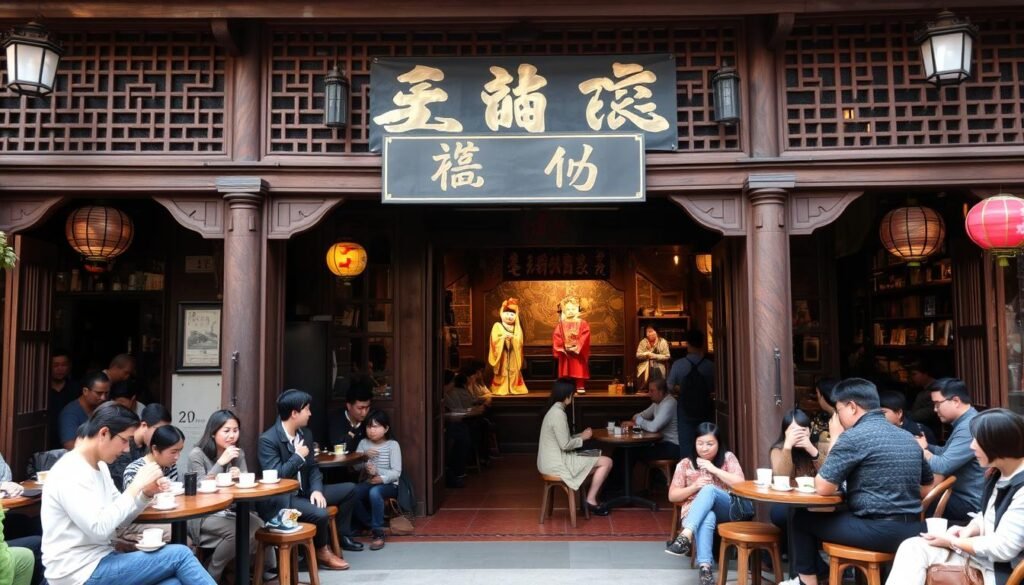Chengdu's vibrant mix of ancient teahouses, spicy Sichuan cuisine, and bustling markets makes it a must-visit destination. Yet, even seasoned travelers can stumble without the right guidance. A well-planned trip ensures you experience the city's magic without common hiccups.
Local insights reveal that timing and cultural awareness are key. For example, visiting popular spots like the Panda Base during peak hours often leads to crowds. Trusted travel guides recommend early mornings or weekdays for a smoother experience.
This guide focuses on optimizing your adventure by highlighting what to skip. You'll learn how to balance iconic landmarks with hidden gems while respecting local customs. Whether it's avoiding tourist traps or navigating seasonal weather, practical tips await.
From savoring street food safely to choosing the best seasons for exploration, smart planning elevates your journey. Let's dive into strategies that transform potential missteps into unforgettable moments in this dynamic city.
Understanding Chengdu’s Unique Culture and Heritage
The soul of Sichuan province thrives in Chengdu's preserved heritage sites and museums. At the Sanxingdui Archeological Site, bronze masks and relics dating back 3,000 years reveal mysteries of the ancient Shu Kingdom. These artifacts connect visitors to the city's Bronze Age roots, showcasing its role as a cradle of early Chinese civilization.
During the Qing dynasty, Chengdu became a hub for tea trade and traditional arts. Historic districts like Kuanzhai Alley still display courtyard homes from this era, blending Ming and Qing architectural styles. Local theaters also keep alive folk operas that once entertained scholars and merchants.
| Historical Period | Cultural Legacy | Modern Access Points |
|---|---|---|
| Bronze Age (1600 BCE) | Sanxingdui artifacts | Sanxingdui Museum |
| Qing Dynasty (1644-1912) | Teahouse culture | Kuanzhai Alley |
| 20th-21st Century | Fusion art movements | Chengdu Museum |
Art enthusiasts find treasures across the city, from lacquerware galleries to calligraphy exhibits. The Sichuan Provincial Museum highlights regional craftsmanship, including intricate embroidery styles unique to the province. Even street markets often feature artisans practicing centuries-old techniques.
By exploring these layers of history, travelers gain insight into what makes old Chengdu distinct. Locals take pride in balancing progress with traditions – a harmony visible in restored temples beside modern cafes. This cultural awareness deepens every interaction, whether bargaining at markets or sharing tea with residents.
Things not to do in Chengdu: Avoiding Common Tourist Pitfalls
Savvy explorers know that avoiding a few key blunders unlocks Chengdu's true charm. Overcrowded attractions and rushed schedules often leave travelers exhausted. Instead, prioritize quality experiences over quantity to make the most of your day.
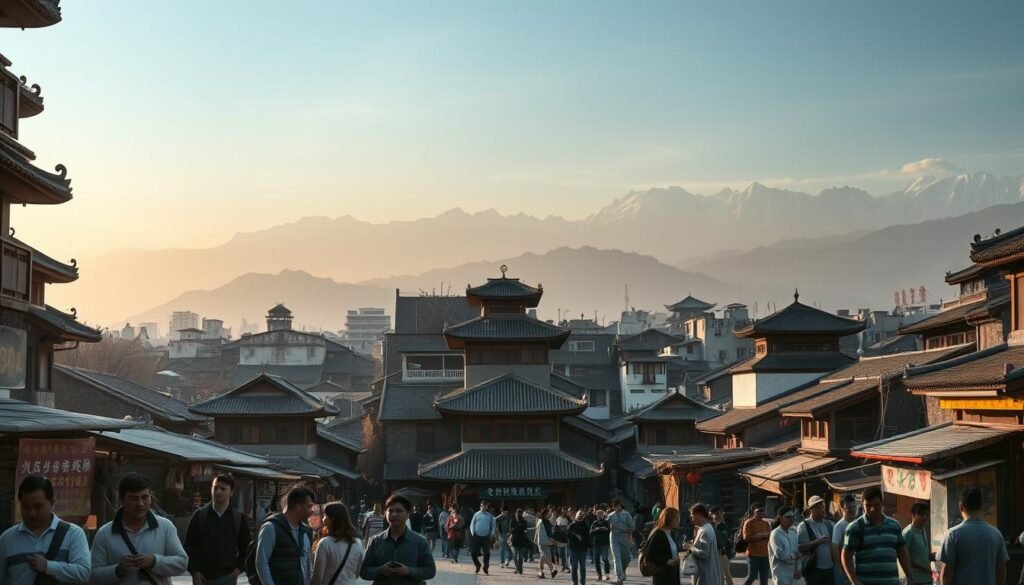
- Visiting Jinli Ancient Street at midday when crowds peak
- Trusting unmarked taxis near tourist hotspots
- Assuming all vendors accept credit cards
Poor planning wastes precious travel time. Many people arrive at the Panda Base after 10 AM, only to face three-hour lines. Smart visitors arrive at opening or book skip-the-line passes through verified platforms.
Street markets demand cautious engagement. Some vendors quote higher prices to non-locals. Learn basic Mandarin phrases like “tài guì le” (too expensive) to negotiate respectfully. Payment apps like WeChat Pay simplify transactions and prevent overcharging.
Adapt your way of exploring by blending popular sites with hidden gems. Swap afternoon temple visits for early morning walks when locals practice tai chi. This approach lets you experience authentic culture while avoiding tour groups.
With thoughtful strategies, every day becomes an opportunity rather than a challenge. Locals appreciate visitors who respect their customs – a simple nod or “xièxie” (thank you) builds rapport. Stay alert, stay curious, and let Chengdu's rhythm guide you.
Overlooking Panda Experiences and Conservation Efforts
Chengdu's lush bamboo forests shelter one of Earth's most beloved creatures: the giant panda. Observing these gentle bears munching on bamboo or playfully tumbling in their habitat ranks high among unforgettable travel moments. Yet, many visitors miss opportunities to engage deeply with conservation efforts that protect this endangered species.
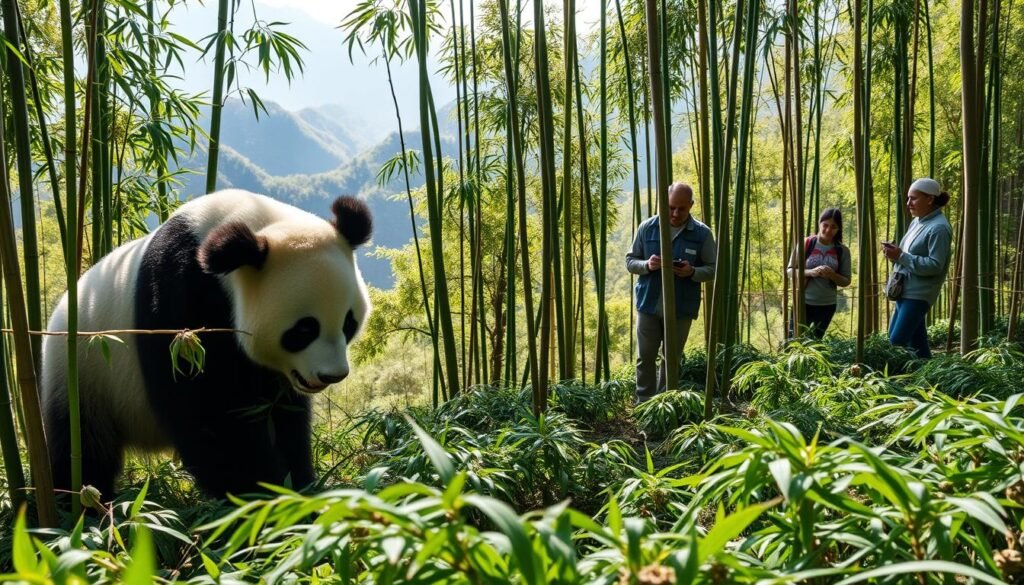
Visiting Panda Breeding Centers
Designated facilities like the Chengdu Research Base of Giant Panda Breeding offer ethical ways to encounter these animals. Arrive early to see pandas at their most active – they typically nap by midday. The base's semi-wild environment mimics their natural home, allowing observation without disruption.
Respecting Wildlife and Local Guidelines
Follow staff instructions about noise levels and distance. Flash photography stresses pandas, so keep cameras muted. At Dujiangyan Panda Base, volunteers can assist with habitat maintenance, directly supporting conservation work.
| Panda Base | Specialty | Visitor Experience |
|---|---|---|
| Chengdu Research Base | Breeding programs | Cub viewing areas |
| Bifengxia | Mountain habitats | Eco-trail hikes |
| Dujiangyan | Rehabilitation | Volunteer programs |
Your visit funds vital research – pandas eat 26-84 pounds of bamboo daily, requiring massive habitat preservation. By choosing accredited centers, you help combat habitat loss affecting wild populations. Even purchasing souvenirs from onsite shops supports local conservationists.
Missing Out on the Magic of Sichuan Opera and Local Arts
Chengdu's artistic pulse beats strongest in its centuries-old performance traditions. Sichuan Opera stands out as a dazzling blend of music, acrobatics, and storytelling perfected over generations. Missing this cultural spectacle means overlooking a vital part of the city's identity.
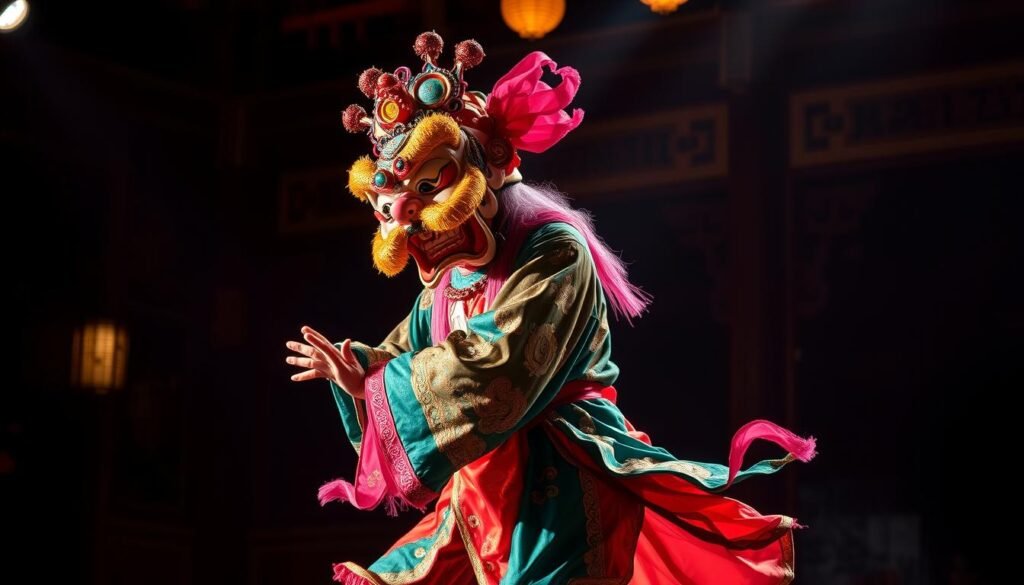
Experiencing the Face-Changing Tradition
The opera's iconic “bian lian” (face-changing) act leaves audiences spellbound. Performers swap colorful masks in milliseconds using subtle hand flicks or sleeve movements. This guarded technique, passed down through families, remains one of China's most protected cultural secrets.
Proper Etiquette at Live Performances
Respect enhances enjoyment at these intimate shows. Arrive early to secure seats near the stage, but avoid using flash photography. Loud conversations during acts disrupt the performers' focus – save reactions for applause breaks.
| Venue | Highlight | Visitor Tip |
|---|---|---|
| Shufeng Yayun Teahouse | Traditional tea-and-opera combos | Book front-row seats online |
| Jinjiang Theater | Modern interpretations | Weeknight shows less crowded |
| Chengdu Culture Park | Open-air performances | Bring insect repellent evenings |
Choose established venues like Jinjiang Theater for authentic experiences. Smaller places might cut corners on quality. These performances offer more than entertainment – they're living history lessons told through vibrant costumes and folk tales.
Overindulging in Sichuan Cuisine Without Caution
Sichuan's fiery flavors tempt travelers, but diving in without strategy can overwhelm even bold palates. The region's food culture thrives on balance – numbing peppercorns cut through chili oil, while cooling dishes offset intense heat. 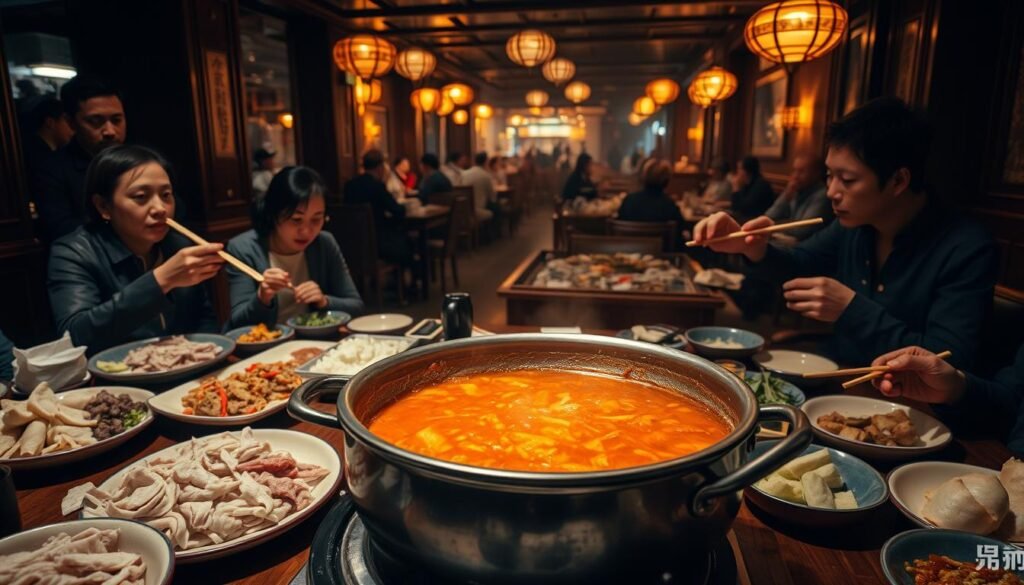 Start with milder options like dan dan noodles before tackling Chongqing-style hot pot swimming in crimson broth.
Start with milder options like dan dan noodles before tackling Chongqing-style hot pot swimming in crimson broth.
Navigating Spicy Hot Pot and Local Dishes
Hot pot isn't just a meal – it's a social ritual. Choose broth spice levels wisely: “wei la” (mild) still packs punch. Local markets like Jinli Walking Street offer safer introductions with portion-controlled snacks:
- Pair mapo tofu with steamed rice to tame its mala spice
- Try “fu qi fei pian” (beef lung slices) at trusted vendors
- Balance fiery chicken dishes with sweet glutinous rice balls
Understanding Dining Etiquette
Meals here follow unspoken rules. At family-style restaurants, spinning the lazy Susan clockwise shows respect. Use serving chopsticks for shared dishes – reaching with personal utensils breaks hygiene norms. Street food etiquette matters too: finish what you take at buffets to avoid waste fees.
For culinary adventurers, our guide to 32 must-try Chinese dishes highlights Sichuan specialties worth the burn. Remember: the best meals come from watching locals – follow their lead on dipping sauces and pacing.
Misinterpreting Local Dialects and Communication Styles
Navigating conversations in Chengdu requires more than basic Mandarin skills. The local Sichuan dialect carries distinct tones and slang that puzzle even native Chinese speakers. A simple phrase like “zuo shenme” (what's up) becomes “zua zi” here – just one example of how words shift meaning across regions.
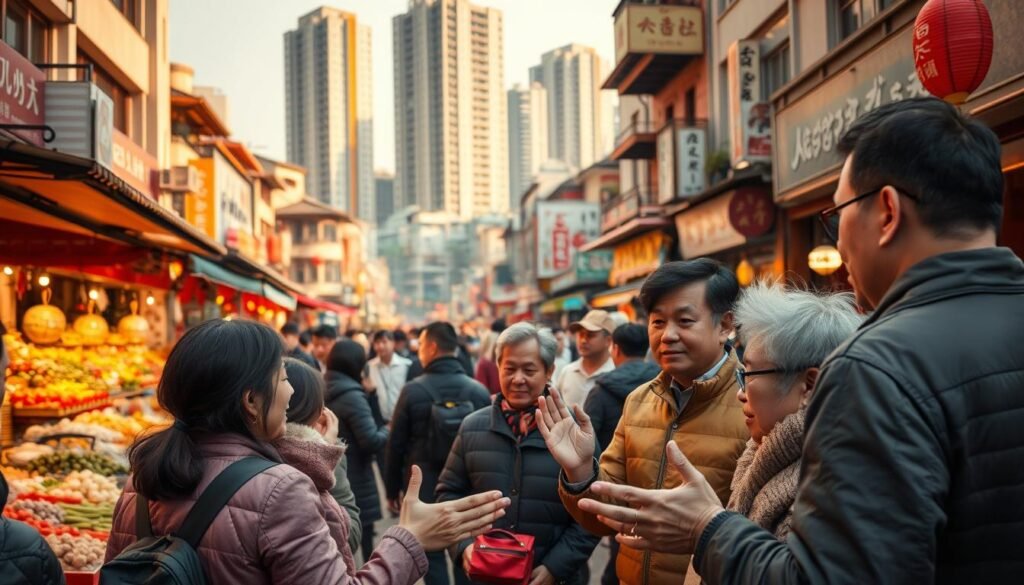
These linguistic differences shape daily interactions. Market vendors might quote prices using terms unfamiliar to outsiders. Taxi drivers could misinterpret directions if you use standard Mandarin pronunciations. Locals appreciate visitors who ask clarifying questions rather than assuming understanding.
- Listen for rising tones in questions – Sichuanese often ends sentences with “ma” or “sa”
- Use hand gestures or translation apps when words fail
- Smile through misunderstandings – humor bridges gaps
Patience becomes your best tool. When a shopkeeper repeats “mei de shir” (no problem), they're showing goodwill despite language barriers. Embrace these moments as cultural insights rather than frustrations.
The world of Sichuan expressions rewards curious travelers. Notice how elders use poetic idioms during tea house chats. Young locals blend dialect with internet slang, creating a vibrant linguistic fusion. Approach exchanges with an open mind, and you'll discover connections that transcend words.
Disregarding Travel Safety and Practical Tips
Navigating Chengdu smoothly starts with smart safety habits. At Shuangliu International Airport, stick to marked taxi lines or pre-book rides through apps like Didi. Unofficial drivers often overcharge newcomers – a quick scan of your ride's license plate matches the app details prevents issues.
Public parks like People Park demand extra vigilance. Keep bags zipped and in front of you during peak hours when crowds gather for tea ceremonies or mahjong games. Thieves target distracted visitors near photo spots and food stalls.
When using the international airport, arrive 3 hours early for flights. Security lines grow long, especially during holiday seasons. Save time by packing liquids separately and keeping your passport accessible.
Follow these strategies for hassle-free exploration:
- Use ride-sharing apps with GPS tracking for transparent routes
- Avoid displaying expensive electronics in busy metro stations
- Carry small bills – vendors near People Park rarely give correct change for large notes
At People Park's open-air tea houses, secure your phone before watching face-changing performances. Pickpockets blend into lively audiences. Stay aware without sacrificing fun – these precautions let you savor Chengdu's charm with confidence.
Bypassing Historical Landmarks and Architectural Wonders
Skipping Chengdu's ancient marvels means missing chapters of China's story carved in stone. The Leshan Giant Buddha stands as the ultimate proof – this 233-foot-tall statue took 90 years to complete during the Tang Dynasty. Its curled hair coils hide a genius drainage system that's protected the structure from erosion for 1,300 years.
Beyond the statues, Chengdu's architectural heritage shines in places like Wuhou Shrine. Its red-walled halls showcase intricate dougong brackets – interlocking wooden pieces that withstand earthquakes. Nearby, Qingyang Palace's octagonal pavilion blends Taoist philosophy with precise symmetry, reflecting ancient cosmological beliefs.
| Site | Unique Feature | Preservation Technique |
|---|---|---|
| Leshan Giant Buddha | Mountain-carved statue | Bio-lime mortar repairs |
| Anren Ancient Town | Republican-era mansions | 3D laser mapping |
| Du Fu Thatched Cottage | Tang poetry gardens | Traditional mud-wall restoration |
Conservation teams work tirelessly to protect these treasures. At the Giant Buddha, specialists use bio-lime mortar matching original materials. Drones monitor cracks while limiting tourist foot traffic prevents stress on fragile areas.
Visiting these landmarks offers more than photo ops. Watching sunrise illuminate the Leshan Giant's serene face creates lifelong memories. Schedule morning tours to beat crowds – boats departing at 8 AM provide full-profile views without the 3-hour mountain queue.
Neglecting the Natural Landscapes and Hiking Opportunities
Beyond Chengdu's urban energy lies a wilder side shaped by ancient geological forces. Western Sichuan province cradles snow-capped peaks, alpine meadows, and trails forged over millions of years. These landscapes offer breathtaking escapes just hours from the city center.
Exploring Scenic Mountain Trails
Mount Siguniang, nicknamed “The Alps of the East,” features four summits reaching over 16,000 feet. Its Shuangqiao Valley trail reveals glacial lakes and wild yaks grazing below jagged ridges. For moderate hikes, Emei Shan's forested paths lead to Buddhist temples shrouded in mist.
| Trail | Elevation | Best Season | Key Feature |
|---|---|---|---|
| Mount Siguniang | 12,000-16,500 ft | May-October | Glacial valleys |
| Jiuzhaigou Valley | 6,600-14,500 ft | September-November | Turquoise lakes |
| Emei Shan | 3,300-10,167 ft | April-November | Cloud sea views |
Start hikes before 8 AM to avoid afternoon thunderstorms common in Sichuan province. Pack layered clothing – temperatures swing 30°F between base camps and summits. Sturdy boots prove essential on rocky paths polished smooth by centuries of rainfall.
Overlooking these adventures means missing nature's grand theater. Trails like Hailuogou Glacier Park let you walk beside 1,000-year-old ice formations. Balance city tours with wilderness days to experience the region's full duality.
Local guides recommend dedicating 2-3 days for multi-stage routes. Many trails have well-maintained lodges serving hot Sichuan pepper chicken stew – perfect fuel after a mountain ascent.
Timing Your Visit to Maximize Enjoyment
Smart travelers know that timing shapes every Chengdu adventure. Spring (March-May) and autumn (September-November) offer mild temperatures and fewer rain showers. These seasons let you explore open-air markets and parks without battling summer humidity or winter chill.
Popular spots like Wuhou Temple see lighter crowds during weekday mornings. Arrive by 8:30 AM to enjoy peaceful walks before tour groups arrive. Evenings from 5-7 PM work well for night markets – vendors restock fresh ingredients while locals dine later.
| Attraction | Peak Hours | Best Hours | Benefits |
|---|---|---|---|
| Giant Panda Base | 10 AM-12 PM | 7-9 AM | Active pandas, shorter lines |
| Jinli Ancient Street | 12-3 PM | 8-10 AM | Better photos, cooler temps |
| People's Park | Weekends | Weekday afternoons | Authentic tea house vibes |
Local festivals add magic but require planning. The Sichuan Opera Festival each October extends performance hours with special shows. Visit during weekdays of festival weeks for full access without weekend crowds.
Build flexibility into your schedule. Summer thunderstorms often clear by mid-morning – use rainy hours for museum visits. Check attraction websites for real-time crowd updates to adjust your plans hourly.
Wrapping Up Essential Insights for a Smart Chengdu Trip
Your Chengdu adventure thrives on mindful exploration and respect. Plan visits to pandas at dawn, savor spicy dishes gradually, and skip midday crowds at cultural sites. Carry small bills and translation apps – these simple steps transform potential frustrations into smooth interactions.
Remember: Chengdu rewards those who balance iconic spots with hidden gems. Watch face-changing operas, hike misty trails near Mount Emei, and chat with teahouse locals. Each experience weaves together the city's ancient roots and modern energy.
Use this guide as your checklist when you visit Chengdu. Time temple tours for quiet mornings, verify taxi licenses, and book opera seats early. Respectful curiosity opens doors – vendors share stories, chefs recommend milder dishes, and guides reveal secret viewpoints.
Pack flexibility alongside your itinerary. Rainy afternoons become museum discoveries, while wrong turns lead to steamed bun stalls. Every thoughtful choice deepens your connection to Sichuan's heart. Let these tips shape your next visit Chengdu – where preparation meets wonder for journeys that linger long after departure.
